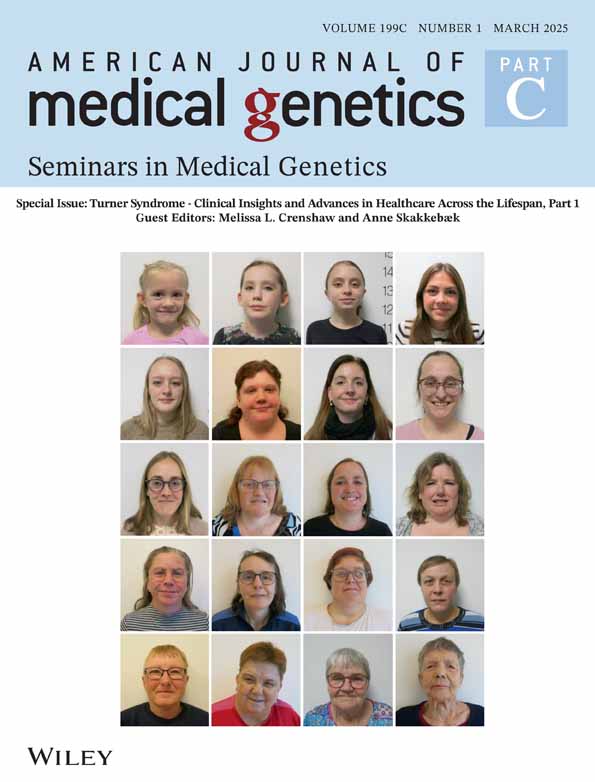Genetics of mental retardation
It is not by chance that together with the Editor-in-Chief of the American Journal of Medical Genetics we choose to devote an entire issue of Seminars in Medical Genetics to mental retardation (MR). This, in fact, is one of the complex neuropsychiatric disorders for which the etiopathogenesis is still poorly understood. This condition, of great concern for public health and society, is estimated to occur in 1% to 10% of the population, and research on its etiology has always been a challenge in medicine. The etiopathogenesis encompasses so many different entities, that the attending physician can sometimes feel a “virtual panic,” starting a wide-range diagnostic evaluation of outrageously high cost, which, at times, is even painful to the patient. Despite these efforts, the absence of specific clinic and laboratory findings in almost 50% of individuals leads to a label of “idiopathic mental retardation,” and families are assigned recurrence risks based on either the empiric risk or the pedigree analysis, which is limited by both the family size and the accuracy of the family history.
The main aim of this issue is to focus on the most appropriate and newest investigations shown to, at present, improve the diagnostic yield of developmental delay/MR (DD/MR), in the context of recommendations for the clinical evaluation of the patient with undiagnosed MR. The first four articles of the issue have been selected for this purpose.
In addition, there are three articles devoted to the update on relatively newly defined multiple congenital anomalies/MR syndromes (MCA/MR) that have a significant impact on the etiology of DD/MR. The issue is closed by an important footnote on the need for more interaction between health care professionals and school/local professionals/special educators taking care of the DD/MR individual. Of note, a previous issue of this seminar series [Neri and Chiurazzi, 2000] dealt with the important topic of X-linked mental retardation in a comprehensive fashion, and we will not cover it here.
Battaglia and Carey have the most challenging task of suggesting an algorithm for the rational evaluation of a patient with DD/MR, bearing in mind the latest scientific and technical advances. Their review focuses on the most appropriate investigations necessary to define the etiology of DD/MR, based on their own clinical experience and on the most recent literature reports.
The articles by Xu and Chen concern the use of new molecular cytogenetic techniques in the evaluation of MR. The authors review the pros and cons of the new molecular cytogenetic methods and of their potential applications in the diagnosis and prognosis of MR. They conclude that the choice of employing one method or another will depend on clinical indications, medical and family history, degree of clinical urgency, accessibility to technical approaches, and tolerance of suboptimal results.
The next article by Battaglia deals with the usefulness of neuroimaging investigations in the evaluation of DD/MR. We decided to include a review on such a “hot topic,” due to very recent reports in the literature and personal experience that showed the relevance of special magnetic resonance techniques, such as proton magnetic resonance spectroscopy, for recognition and diagnosis of new inborn errors of metabolism [Bianchi et al., 2000; de Koning et al., 2000; Leuzzi et al., 2000; Cecil et al., 2001; Item et al., 2001] and for monitoring treatment in distinct conditions [Pietz et al., 1996; Bianchi et al., 2000].
The metabolic and anatomical substrate of some conditions leading to MR is not known yet. In our day-to-day practice, each one of us can realize how less familiar metabolic disorders and conditions with variable and subtle dysmorphic features (i.e., Smith-Lemli-Opitz syndrome and congenital disorders of glycosylation) may initially be labelled as non-specific forms of DD/MR. In this light, the article by Kahler and Fahey helps greatly toward a better approach to the evaluation of the individual with DD/MR. They feel that “metabolic testing must be considered even when the yield is likely to be low, as the implications for the patient and the parents can be very large.” No doubt, this statement will bring about an interesting and stimulating debate in the clinical community.
Mental deficiency, alterations in performance, and central nervous system abnormalities in overgrowth syndromes are discussed by Cohen in a truly comprehensive and excellent review. This is followed by two timely reviews by Hennekam and by Matsumoto and Niikawa on the Costello and Kabuki “make-up” syndromes, respectively. The paper by Matsumoto and Niikawa is additionally interesting because it tells the “story behind the syndrome.” Of particular note, these authors make a strong case to retain the term Kabuki “make-up” syndrome.
Lastly, the article by Finucane and collaborators points out an important issue: the great need for more interaction between doctors and all those professional figures taking care of the DD/MR patient locally. Such an interaction is essential for the most complete evaluation of the DD/MR patient, and for the consequent lay out of the best possible personalized rehabilitation program. This should cover motor aspects, cognition, communication, and social skills. It's worth saying that at the Stella Maris Institute for Child and Adolescent Neuropsychiatry, we currently have such an interaction that has resulted, over the years, in a reciprocal cultural enrichment and in a more exhaustive evaluation of our DD/MR patients.
We wish to express our most sincere appreciation to all contributing authors for their work and cooperation. We truly hope that our efforts might be of some help to the colleagues and to all those professionals taking care of individuals with DD/MR, from whom we are continuously learning.




